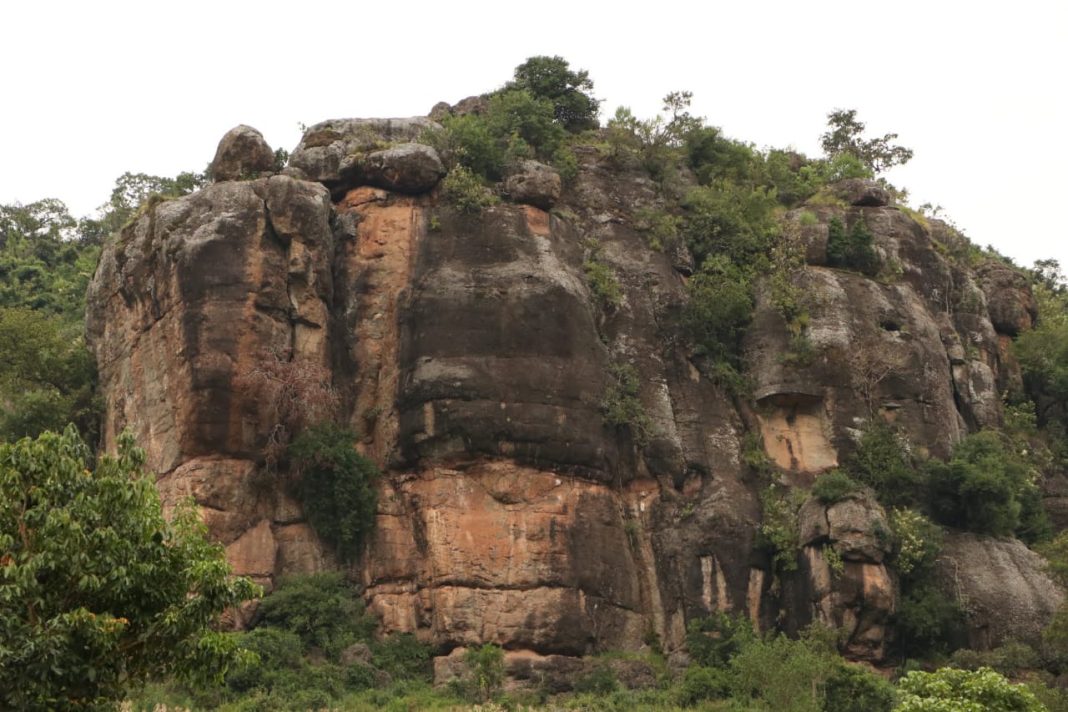By Remmy Butta
Nestled within the verdant landscapes of Nandi County, Kenya, the Tinderet volcanic complex stands as a silent sentinel to a unique and geologically significant past.
This region isn’t just rolling hills and fertile farmland; it holds a subsurface secret with potentially transformative economic implications: volcanic rocks containing blocks of carbonatite lavas.
The presence of these rare igneous rocks isn’t just a geological curiosity; it represents a compelling scientific and economic argument for intensified mineral exploration in Tinderet.
- Carbonatites: Geological Rarity Laden with Potential
Carbonatites are exceptionally rare rocks, constituting less than 1% of all igneous rocks on Earth. Unlike the familiar silica-rich lavas, carbonatites are primarily composed of carbonate minerals (calcite, dolomite) and are formed from carbonate-rich magmas originating deep within the mantle. Their rarity alone makes them significant, but their true importance lies in their exceptional propensity to become enriched in economically critical minerals.
√ Critical & Strategic Minerals: Carbonatites are globally recognized as the primary source of Rare Earth Elements (REEs) and niobium (Nb). REEs are indispensable for modern technologies – permanent magnets in wind turbines and electric vehicles, phosphors in screens, catalysts, and advanced electronics. Niobium is crucial for high-strength, low-alloy steels used in pipelines, automotive frames, and aerospace components. Both are classified as critical minerals by major economies due to supply chain vulnerabilities.
√ Other Valuable Companions: Beyond REEs and Nb, carbonatites and their associated rocks often host significant concentrations of phosphate (for fertilizers), fluorite (for industrial processes), copper, apatite, barite, and even vermiculite. The specific suite depends on the complex magmatic and hydrothermal history of the intrusion.
- Tinderet’s Specific Geological Endowment
The documented presence of blocks of carbonatite lava within the Tinderet volcanic sequence is a powerful indicator. It suggests:
√ Proximity to Source: These lava blocks are likely fragments (xenoliths) ripped from a deeper-seated carbonatite intrusive body during explosive volcanic eruptions. Their presence at the surface signals that a potentially mineral-rich carbonatite intrusion exists at depth within the Tinderet complex.
√ Exploration Vector: These surface occurrences act as natural signposts, guiding geologists towards the most prospective areas for detailed exploration. They confirm the geological processes necessary for carbonatite formation occurred here.
√ Underexplored Potential: While known geologically, Tinderet’s carbonatite-associated mineral potential remains significantly underexplored using modern techniques. Previous work may have identified the geology, but systematic, technology-driven exploration for specific commodities like REEs and Nb is likely in its early stages.
- The Driving Need for Exploration
Given this geological foundation, why is exploration urgently needed?
√ Confirming Economic Viability: Surface rocks hint at potential, but only systematic exploration (geochemical sampling, geophysical surveys like magnetics and gravity, and ultimately drilling) can determine the size, grade (concentration), and distribution of mineral resources. Is the potential truly world-class, or more localized? Exploration provides the answers.
√ Unlocking Kenya’s Mineral Wealth: Kenya seeks to diversify its economy beyond agriculture and tourism. A significant mineral discovery in Tinderet could be a game-changer, attracting major investment, creating high-value jobs (geologists, engineers, technicians, skilled laborers), and generating substantial government revenue through royalties and taxes.
√ Securing Critical Supply Chains: Global demand for REEs and niobium is soaring, driven by the green energy transition and technological advancement. Discovering new, viable sources like Tinderet would contribute to diversifying global supply chains, reducing over-reliance on a few dominant producers, and enhancing Kenya’s strategic importance.
√ Local Economic Transformation: Responsible mineral development, preceded by thorough exploration, could bring significant infrastructure development (roads, power), skills training, and ancillary businesses to the Tinderet area and Nandi County, boosting the regional economy and improving livelihoods.
√ Scientific Understanding: Detailed exploration would also yield invaluable scientific data about the formation of the Tinderet complex and the behavior of carbonatite magmas in this specific tectonic setting, contributing to global geological knowledge.
From Volcanic Past to Economic Future
The carbonatite blocks scattered across Tinderet are not mere geological relics; they are tantalizing clues pointing towards a potentially rich subsurface endowment of minerals critical to the 21st-century economy. Ignoring this potential is to overlook a significant opportunity for Nandi County and Kenya.
While exploration carries inherent risk and must be approached with diligence and responsibility, the potential rewards – economic diversification, job creation, technological relevance, and regional development – make a compelling case.
Systematic, modern, and responsible mineral exploration in Tinderet is not just a scientific endeavor; it’s an economic imperative.
It’s the essential first step to determine if this unique volcanic landscape holds the key to unlocking sustainable prosperity for its people and contributing vital resources to the world.
The time to explore is now.




